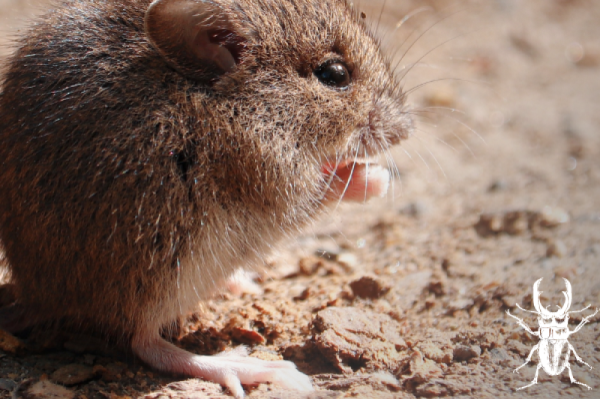How to check for a pest infestation inside when house hunting
Use your nose
Just using your sight to look for pests isn’t going to be enough. Different pests have very distinct odors. If you smell anything musty or oily, it could be a sign of cockroaches or rodents. Musty but sweet smells can come from a large infestation of bed bugs while a fungal type smell can come from termites. Other smells like garbage, chemicals, or urine can also indicate a pest infestation.
Look for dead bugs
It can be easy to overlook bugs because they’re typically very small, but check the floors, windowsills, and basement carefully for dead bugs or signs of molting, also known as shedding for certain bugs and animals.
Check for pest droppings
Animal droppings can be mistaken for dirt or stains so always take a closer look. It may be gross, but this is one of the best ways to detect pests in a home. Here’s what to look out for:
- Dirt that looks like coffee grounds: this could be a sign of cockroaches.
- Pellets: many pests like rodents leave droppings that look like pellets the size of tic-tacs, so pay close attention to window sills and baseboards for trails of small pellets.
- Dark maroon or brown spots: if you see any small maroon spots on the walls, near outlets or behind a bed, it’s usually a sign of bedbug infestation.
- Wood shavings: at first glance you might see what looks like wood shavings along window sills. While this could be a sign of recent construction, termite droppings also look like wood shavings.
Pest control products and traps
Check the cabinets and under the sink for any pest control products. If they’ve been used at all, it’s likely a sign of a past or current infestation. Also check for rat or mouse traps throughout the house or apartment. Use these items as your chance to start a conversation about any recent pest problems on the property with the owner or agent giving you a tour.
Signs of nesting or eggs
Look inside cabinets, behind appliances, small nooks and crannies for signs of nesting. Look for black or reddish-brown spots in these areas which happen to be favorites for roaches and bed bugs. Rodents will use whatever they can find to build nests, so piles of shredded paper, cardboard or grass are cause for alarm. Also check for sacks of eggs throughout the house, which are an indication of an ongoing pest infestation.
Listen for pests
If you hear small feet pattering, gnawing, squeaking, scraping, or any other strange noises, it’s probably a sign of mice or rats. It’s important not to be in a rush when looking through the house. Take your time and go into rooms by yourself so you can focus in on any strange sounds.
Check the baseboards
Rats and mice chew holes where the wall and floor come together to get in and out of rooms. Keep an eye on the baseboards in each room for gnaw marks or small holes. Rodents also run along the walls so look for grease marks, urine trails and footprints on or along the baseboards. While you’re there, check any electric cords and other wires you find for rodent bite marks. Rather than gnaw, bed bugs hide in baseboards and outlets of empty rooms where they can’t latch onto furniture.
Bring a flashlight
Dark places like cabinets, closets and hard to reach areas make for the perfect hiding places for pests. Shine a flashlight in all of these areas to look for any sign of pests.
Look for termite tunnels
Termites are one of the pests that can do the most damage in a home as they can ruin the building’s wooden structures. These pests build long tunnels or tubes that are about the width of a pencil and look like dried mud.
Check with previous owners and neighbors
If you’re able to contact the previous owners, check in with them and ask if there have been any recent pest infestations. It’s also a good idea to check with your potential neighbors, especially in apartment buildings, as pests can travel from unit to unit or house to house. They might be more transparent with you than the person trying to sell you the house.
Ask the seller
Sellers are required by law to disclose any recent or current pest infestation issues on the property. It’s best to be straightforward and ask the seller about pests while touring the home. If the seller gets antsy (no pun intended) or doesn’t directly answer your question, it’s a red flag.
Tips for finding signs of pest infestation outside the home
You should always check the yard and area around the perimeter of the house for signs of pests.
Look for ant or termite hills
If there are signs of ants or termites outside the home, it’s very likely that they are inside the home as well. Ant hills look like a small mound of dirt with a crater in the middle. If you find an ant hill, look for trails of ants nearby. Termite hills are usually more obvious. They are large, hardened mounds with chimney-like structures that have holes along the top. If you see insects near the hill that look like ants, but much larger with wings, they’re termites. If you don’t see a hill, that doesn’t mean you’re in the clear. Some termite species build their homes underground so make sure to keep a close eye for signs of termites inside the house.
Check the property’s surroundings
If the house is located near an ally or the street is unclean and covered with garbage, the area is the perfect breeding ground for pests. Look for any hanging electrical wires to see if there are gnaw marks, which could be a sign of rodents. Rodents like water and gas pipes as well.
Look out for mole holes
While moles are just an outdoor pest, they can wreak havoc on your lawn, tearing up holes in the ground and creating uneven patches in the grass. Mole holes look like small volcanoes made of dirt and there will usually be several throughout the yard if there is an active mole.
Quick Summary: there are all sorts of pests that can make a mess inside and outside the home. While house hunting or apartment searching, make sure to check for signs of pest infestation. Here’s what to look out for:
- Strange smells
- Dead bugs
- Pest droppings
- Pest control products and traps
- Signs of nesting or eggs
- Scratching, squeaking, scurrying, or other strange noises
- Smears, gnaw marks, or holes along the baseboards
- Pests or signs of pests hiding in dark spaces
- Termite tunnels
- Ant or termite hills outside
- Dirty streets or chewed wires around the property
- Mole hills
- Feedback from the seller, neighbors, or previous owners about pests


